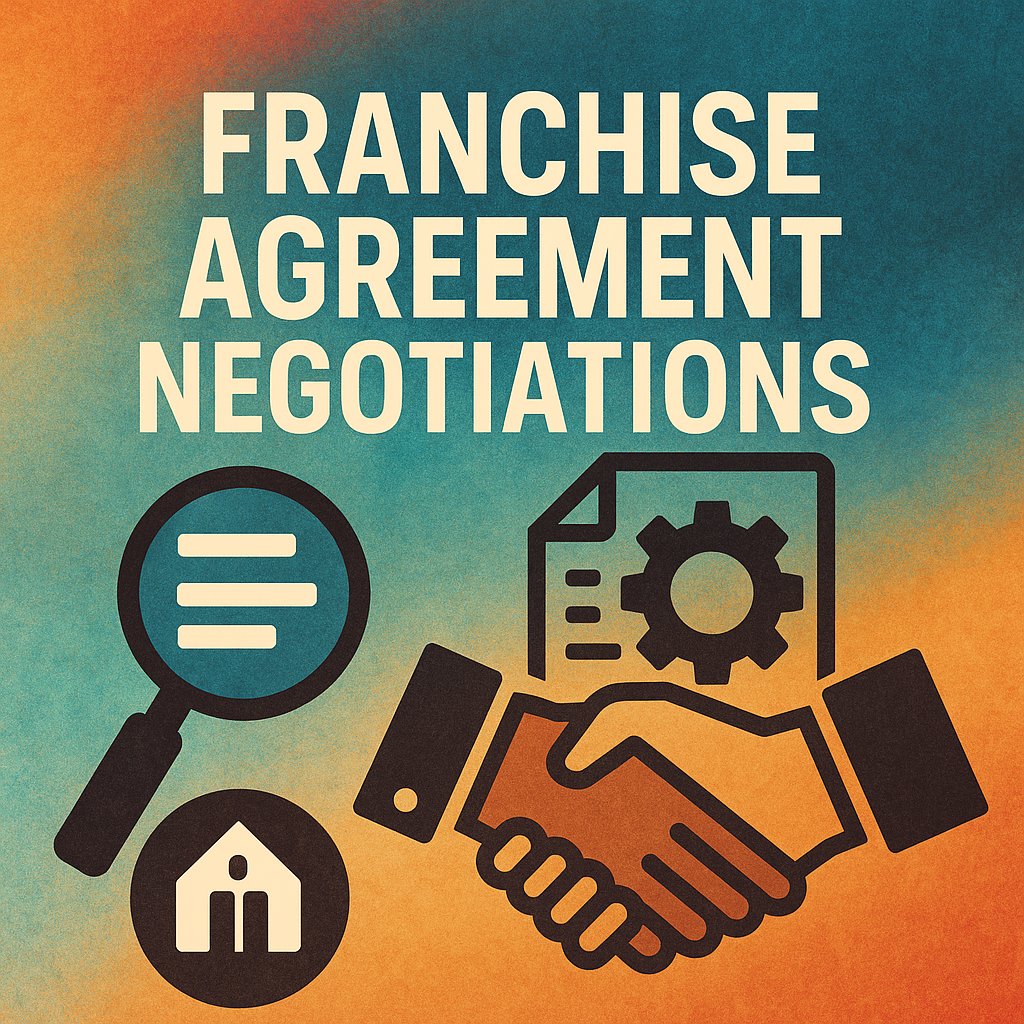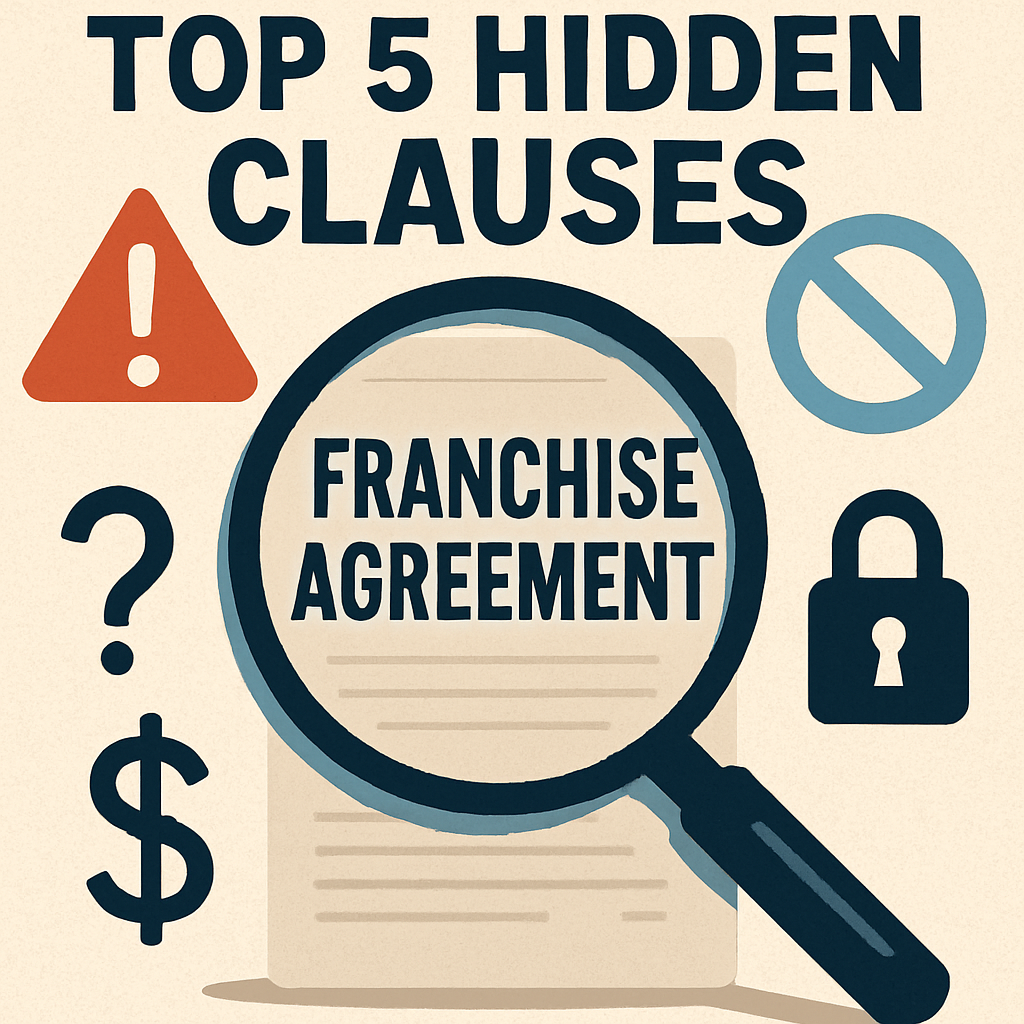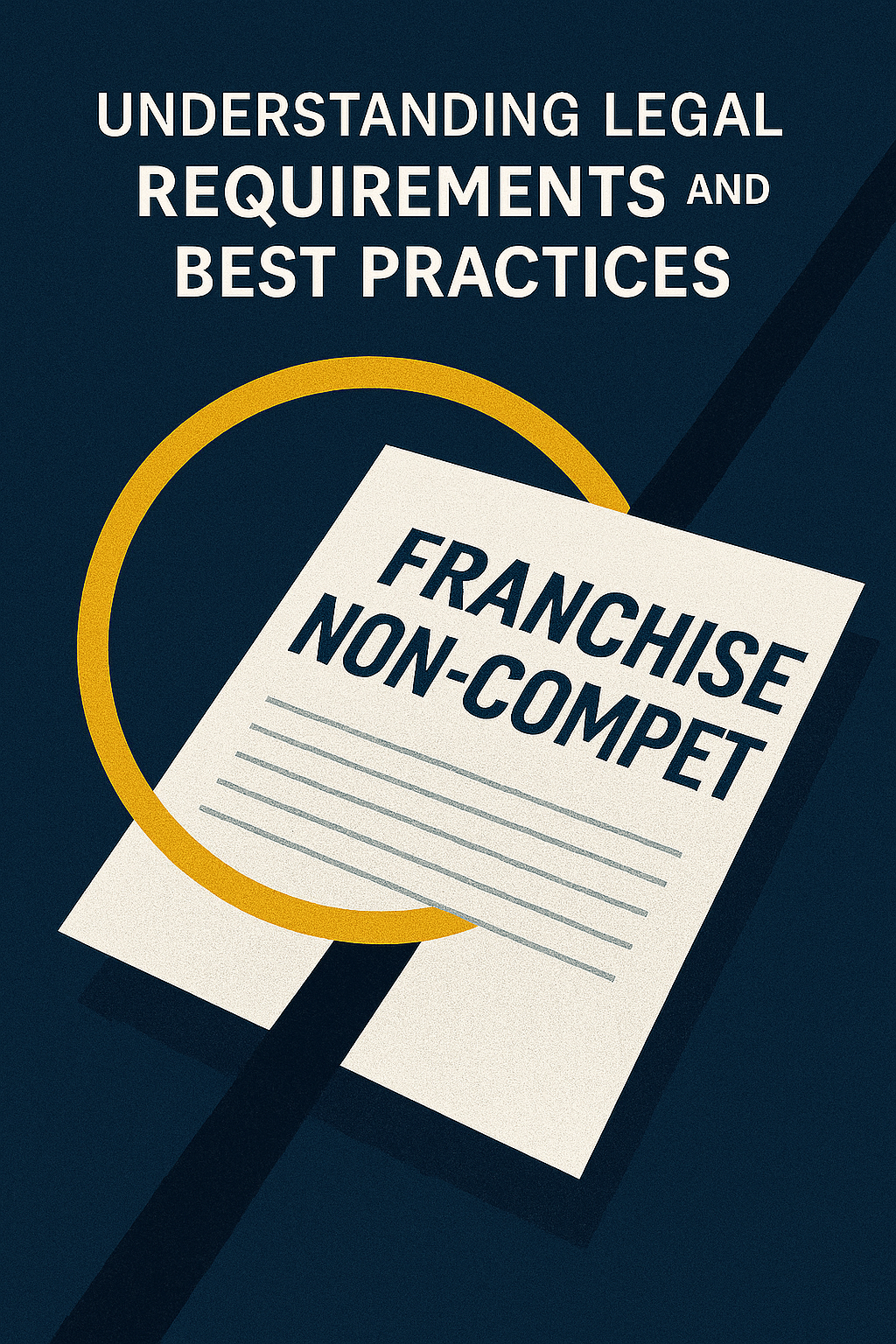Franchising can be a lucrative business venture, but one of the most crucial decisions that franchisees have to make is selecting the right site for their franchise. Site selection plays a vital role in the success of a franchise business, as the location can significantly impact its profitability and growth potential. In this article, we will explore the importance of site selection in franchise agreements and provide an in-depth analysis of the various factors that franchisees need to consider when choosing their franchise location.
Understanding the Importance of Site Selection in Franchise Agreements
Choosing the right site for a franchise is more than just finding a location that looks appealing or is conveniently situated. It requires a comprehensive understanding of the local market, competition, and target audience. By carefully considering these factors, franchisees can position their business for success from the start. A well-chosen site can attract a steady flow of customers and generate higher sales, while a poorly chosen site can lead to limited foot traffic and decreased profitability. Therefore, it is essential for franchisees to navigate the site selection process in their franchise agreements with utmost diligence.
Factors to Consider When Selecting a Site for Your Franchise
There are several factors that franchisees should take into account when selecting a site for their franchise. Firstly, understanding the demographics and target audience of the area is crucial. Conducting market research to analyze the population, income levels, and lifestyle preferences of potential customers can help franchisees identify the most suitable locations. Additionally, evaluating competition and market saturation is vital to prevent opening a franchise in an area that is already overcrowded with similar businesses. By assessing these factors, franchisees can ensure that their chosen location has the potential for profitability and long-term growth.
Another critical consideration in site selection is the accessibility and visibility of the location. Franchisees need to ensure that their business is easily accessible to their target audience, whether that be through convenient transportation options or proximity to major roads and highways. Moreover, the visibility of the franchise is essential in attracting potential customers. A highly visible location with ample signage can significantly contribute to the overall success of a franchise.
The Role of Location in the Success of a Franchise Business
In the world of franchising, the old saying “location, location, location” holds true. The right location can make or break a franchise business. A prime location can result in increased foot traffic, higher customer awareness, and improved sales. On the other hand, a poor location can lead to low visibility, limited customer flow, and reduced revenue. Therefore, franchisees must thoroughly evaluate potential locations to ensure that they align with their business objectives and target market.
Conducting Market Research for Effective Site Selection
Before signing a franchise agreement, conducting thorough market research is imperative to identify the most suitable site for a franchise. Market research provides valuable insights into the local market, customer preferences, and the potential demand for the franchise’s products or services. By studying the market conditions and consumer behavior patterns, franchisees can make informed decisions regarding their site selection process.
Market research involves collecting and analyzing data on various factors such as population demographics, income levels, spending habits, and competition. This data can help franchisees gauge the potential success of their franchise in a particular area. Additionally, market research can uncover valuable information about the target audience, allowing franchisees to tailor their marketing strategies and offerings to meet the specific needs of their customers.
Analyzing Demographics and Target Audience for Ideal Franchise Locations
An integral part of the site selection process is analyzing the demographics of the target area. Understanding the age groups, income levels, education, and other demographic characteristics of the population can help franchisees determine if there is a sufficient customer base to support their business. For example, a franchise offering high-end fashion products may be better suited to an area with a higher average income and a younger demographic.
Franchisees should also consider the target audience and their preferences when selecting a site for their business. By identifying the needs and desires of their potential customers, franchisees can design their franchise locations and offerings to cater to those specific preferences. For example, if the franchise primarily targets families, it would be beneficial to choose a location near residential areas or in a neighborhood with family-oriented amenities and attractions.
Evaluating Competition and Market Saturation in Potential Franchise Sites
When choosing a location for a franchise, it is vital to evaluate the competition and market saturation in the area. While some competition can indicate a healthy market, too much competition can lead to fierce price wars and reduced profitability. Franchisees need to assess the number of similar businesses in the vicinity and determine if there is enough market demand to sustain their franchise. Additionally, analyzing the market saturation can help franchisees identify gaps in the market that could be filled by their franchise offering.
Assessing Accessibility and Visibility for Optimal Site Selection
Accessibility and visibility are two crucial factors that can greatly impact the success of a franchise business. Franchisees should assess the ease of access to their chosen site, considering factors such as proximity to major transportation routes and parking availability. Franchises that are difficult to reach or lack convenient parking may turn away potential customers.
Visibility is equally important, as a franchise that is easily seen by passing traffic has a higher chance of attracting customers. Franchisees should consider locations with well-placed signage and high footfall areas to maximize visibility. Additionally, being located near complementary businesses or popular destinations can also increase foot traffic and exposure.
Zoning Laws and Regulations: Navigating the Legalities of Site Selection
When selecting a site for a franchise, franchisees must navigate the zoning laws and regulations specific to the chosen location. Zoning regulations dictate how properties can be used and may have restrictions on certain types of businesses in certain areas. Franchisees must ensure that their intended use is permitted in the chosen location and obtain any necessary permits or licenses to operate their franchise legally.
Franchisees should consult with local authorities or zoning experts to understand the specific regulations that apply to their chosen location. Compliance with zoning laws is essential to avoid hefty fines, legal disputes, or even forced closure of the business. Understanding and adhering to the legalities of site selection is crucial for both the short-term success and long-term viability of a franchise business.
Negotiating Lease Terms and Rental Agreements for Franchise Locations
The financial aspects of site selection are equally important. Franchisees need to negotiate lease terms and rental agreements that are favorable to their business and align with their financial goals. This includes negotiating rent prices, tenant improvement allowances, lease duration, and any additional costs or fees associated with the location.
Collaborating with real estate agents or professionals experienced in franchise site selection can be beneficial during the negotiation process. These experts can provide valuable insights into the local real estate market, help franchisees navigate the negotiation process, and ensure that they secure the most advantageous lease terms for their franchise.
Collaborating with Real Estate Agents to Find Suitable Franchise Sites
Real estate agents who specialize in commercial properties are invaluable resources for franchisees in the site selection process. These professionals have extensive knowledge of the local market, property availability, and leasing options. They can assist franchisees in finding suitable locations that meet their specific requirements.
Working with real estate agents can save franchisees time and effort, as these professionals can provide a curated list of potential franchise sites based on the franchisee’s criteria. Real estate agents can also help franchisees assess the potential of a location and negotiate lease terms with property owners. Their expertise and industry connections can be instrumental in finding the optimal site for a franchise business.
Understanding the Pros and Cons of Different Types of Locations (Malls, Standalone, etc.)
Franchisees should carefully consider the pros and cons of different types of locations before making a decision. Each location type, such as standalone units, shopping malls, or strip centers, offers its unique advantages and challenges.
Standalone units provide exclusivity, allowing the franchise to create a distinct presence in the community. However, standalone units may require additional marketing efforts to attract customers due to their isolated nature. Shopping malls can offer higher foot traffic and built-in customer bases, but they may come with high rental costs and strict regulations.
Franchisees should analyze their franchise’s specific needs, target market, and budget constraints to determine which location type aligns best with their business objectives.
Evaluating Infrastructure and Utilities: Essential Considerations for Site Selection
When selecting a franchise location, evaluating the existing infrastructure and utilities of the site is crucial. Having adequate access to essential utilities such as water, electricity, gas, and internet connectivity is essential for the smooth operation of the franchise business.
Franchisees should inspect the site and its surroundings to ensure that the necessary infrastructure is in place to support their specific business requirements. Additionally, considering the availability of parking spaces, loading docks, and storage areas is essential, depending on the nature of the franchise.
Conducting a Cost-Benefit Analysis for Potential Franchise Sites
Before finalizing a franchise location, franchisees should conduct a comprehensive cost-benefit analysis. This analysis involves weighing the costs associated with leasing, rent, utilities, and renovations against the potential benefits such as revenue generation, customer traffic, and long-term growth prospects.
By conducting a cost-benefit analysis, franchisees can make informed decisions about the financial feasibility and profitability of a potential site. This analysis can also help prioritize different locations based on their potential return on investment.
Anticipating Future Growth: Choosing a Scalable Site for Long-Term Success
When selecting a site for a franchise, it is essential to consider the long-term growth and scalability of the business. Franchisees should choose locations that have the potential to accommodate future expansion or the opening of additional franchises in the area. Anticipating future growth and securing sites with ample space and growth potential can ensure the long-term success of the franchise.
Franchisees should consider factors such as available land for expansion, the potential for additional traffic and customer growth in the surrounding area, and the feasibility of replicating the business model in other nearby locations. By selecting a scalable site, franchisees can pave the way for future expansion and capitalize on the success of their initial franchise location.
The Role of Technology and Data Analysis in Modern Site Selection Processes
In today’s digital age, technology and data analysis have revolutionized the site selection process. Franchisees can leverage various tools and technologies to collect and analyze data, enabling them to make informed decisions regarding their site selection. Geographic information systems (GIS), demographic data platforms, and market analytics software can all play a significant role in identifying optimal franchise locations.
These technologies can provide valuable insights into market trends, customer behaviors, competition, and the potential demand for the franchise’s offerings. By harnessing the power of technology and data analysis, franchisees can reduce risks and increase the chances of selecting a site that aligns with their business goals.
Case Studies: Successful Franchisees Share Their Insights on Site Selection
Learning from real-life experiences of successful franchisees can provide valuable insights into the site selection process. Case studies of franchisees who have achieved remarkable success can offer inspiration and valuable lessons for aspiring franchisees.
These case studies can highlight the strategies, considerations, and challenges that franchisees encountered during their site selection journey. By analyzing their experiences and outcomes, franchisees can gain a deeper understanding of the key factors that contribute to site selection success and apply these learnings to their own franchise endeavors.
Common Pitfalls to Avoid in the Site Selection Process
While there is no guaranteed formula for selecting the perfect franchise location, understanding and avoiding common pitfalls can increase the likelihood of making a successful site selection. One of the most common mistakes is rushing the site selection process without conducting thorough research or seeking expert advice.
It is crucial for franchisees to avoid making decisions solely based on assumptions or personal biases. Instead, they should rely on data-driven insights, market research, and professional expertise to guide their site selection process.
Another important pitfall to avoid is underestimating the impact of location on the success of a franchise. Franchisees should prioritize location selection as a critical factor in their overall business strategy and allocate sufficient time and resources to find the best possible site for their franchise.
Adapting Site Selection Strategies to Different Industries and Business Models
Site selection strategies cannot be a one-size-fits-all approach. Different industries and business models have unique requirements and considerations when it comes to choosing the right site for a franchise.
For example, a fast-food franchise may prioritize locations with high daily traffic and proximity to other businesses, while a boutique clothing store may focus on selecting sites with the right target demographic in prime shopping areas. Franchisees should adapt their site selection strategies to align with their specific industry, market, and business model to maximize their chances of success.
Leveraging Location-Based Marketing Strategies to Maximize Franchise Visibility
Once a franchise site has been selected, franchisees need to leverage location-based marketing strategies to maximize their visibility and attract customers. Location-based marketing involves targeting potential customers in a specific geographic area through various marketing channels.
Franchisees can utilize digital marketing techniques such as geotargeting, local search engine optimization, and social media advertising to reach out to their target audience effectively. Additionally, traditional advertising methods like billboards, flyers, and local community sponsorships can also help raise awareness and generate buzz around the franchise’s chosen location.
In conclusion, navigating the site selection process in a franchise agreement requires careful consideration of numerous factors. From analyzing demographics and conducting market research to evaluating competition and negotiating lease terms, each step plays a crucial role in determining the success of a franchise business. By following a comprehensive site selection process and incorporating technology and data analysis, franchisees can make informed decisions that pave the way for long-term profitability and growth.







